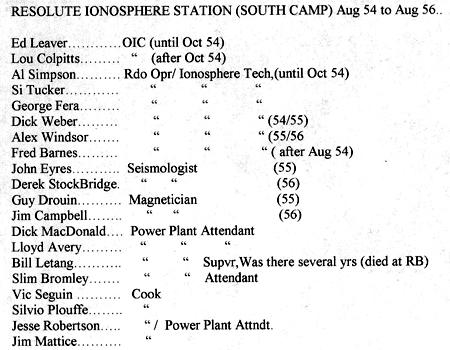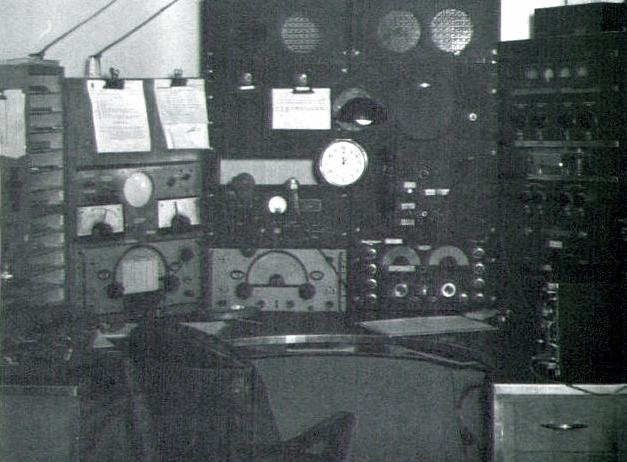 |
| Resolute Bay is located on Corwallis Island, Nunavut. (Map courtesy Google Maps) |
This story has a connection to the St. Roch
 |
| Resolute Bay is located on Corwallis Island, Nunavut. (Map courtesy Google Maps) |
The station was established in 1947 and WAS located on the edge of Resolute Bay, NWT, close to the JAWS weather station but in a separate complex, Later it became known as “South Camp. Curiously, there is a St Roch connection to Resolute BaY. Henry Larsen was heading East and had planned to meet with Task Force 68 (the group establishing the “new” weather station at Winter Harbour). There may have been reasons of sovereignty involved although TF 68 had a Mountie with them and there were three Canadian observers as well - two DRB and one DND). In the event TF68 never made it to Winter Harbour and offloaded everything at Resolute Bay instead. Larsen could not make it through the ice either, so there was no “rendezvous”. While all this was going on (or not) the HBC ship Nascopie sank south of Baffin. There were two mounties based on Devon Island (North of Baffin) and when TF68 arrived at Devon, enroute to Winter Harbour, the two mounties were “away”. The dates of the absence of the mounties and the sinking of the Nascopie are identical and I have wondered if they flew down there to assist but I have no evidence for that and there were other mounties involved with the Nascopie that year. All of this is of interest from a sovereignty point of view as there was a crew of military types on TF68 who had planned to carry out maneuvers on Devon and had to wait for RCMP approval. The days lost may have delayed TF68 reaching Winter Harbour, although they were delayed for other reasons as well. If this is of interest I gave a talk about it to The Arctic Circle last year and can send you my Power Point presentation.So Resolute Bay was established - strictly as a Joint Arctic Weather station in the summer of 1947. That fall a crew from the US built the airstrip at Resolute. One of the planes bringing people in to build the runway was, fortunately, available to fly Ted Gibbon south when he was attacked by a polar bear. A little later they set up an ionsopheric station which, I think, was co-located with the weather station and shared facilities. The equipment shown on your site is of that station. Operators at the ionsopheric stations were hired by DOT but I believe the program was a Defence Research Board program - as it still was in 1956 when I was at Resolute and Eureka. The RCAF built the current main base at Resolute and the weather people moved there, leaving the Ionosphere station at South Camp. I don't know of any SIGINT involvement, unless the Ionospheric DRB/DOC program was classified that way.There is a lot of documentation about the Ionospheric program - including a number of early photos from the wartime station at Clyde River. During the war ionospheric information, as well as weather information, was classified as of strategic importance (See “Metmen at War” and “War North of 80”).
The story of the Resolute Bay Ionosphere Station has been written up by a couple of people (Lloyd Cope, Robinson). Here are a couple of aspects that have come up in the context of the JAWS project.
 S S |
| Submitted by Si Tucker, 20 January 2003 |
THE STATION
 |
| This is the Resolute Bay Ionospheric radio communications position.
The equipment is as follows:
- Next to the message slots on the left is a manually operated "A" Scan Ionospheric Sounder; - In the next rack, bottom, is a Marconi CSR5-A HF receiver. - Above it is an audio control panel. - In the next rack, bottom, is a National Bureau of Standards, NBS-1 HF receiver - Above it is the Telephone control/switching panel. - The next rack to the right is a COLLINS two channel, 300 watt, HF transmitter, Model 30K4. - On the extreme right, not very well seen, is a Hallicrafters (built for the military) BC-610 500 watt HF transmitter. (From the Mitch Powell Collection) Thanks to Si Tucker, Vic Decloux and the late Al Simpson for identifying the equipment |
Al Simpson comments "We built that operating position while I was at Resolute, about 1953 or 1954. Prior to that the equipment just sat on a long bench. To the right of the clock is a telephone handset which I mounted. The line ran over to the Met station. To the left and down from the clock (above the CSR-5) was the audio amp unit for the old US military transmitter. It was a separate unit and fit in a 19 in rack nicely. One can see the meter, the name plate (on right) and a microphone hanging there. The Collins 30K4, on the right, replaced the old US surplus transmitter and would have gone into service at Resolute about the same time as the one at Baker Lake (resupply of 1951). The US built C-2 Ionosphere sounder was to the left of the operating position, out of sight.The old manual sounders had a CRT in the center and two National type dials. The one on the left was the VFO for sweeping the transmitter through the spectrum and the one on the right was to control a height marker. The height marker was a blanking pulse that you could move from the ground pulse on the left side of the CRT to the reflection pulse and then read the height of the layer off the calibration on the right dial. The old Manual Ionosond which used 807 tubes with a thousand volts on the plates, ran blue all the time and the tube element buzzed from the pulses hitting them. It ran one kilowatt Peak Pulse Power (if I remember correctly). That's pushing a couple of 807s to say the least. On the left of the picture is a bunch of stacked slots for filing incoming and outgoing messages.
Prior to the installation of the Collins 30K-4 transmitters we used the US military transmitter (name and model escapes me now). It stood waist high, had a bank of three plug-in units on the right side of the top (oscillator and multiplier stages) and the three plug-ins were switchable for a three frequency operation, but you had to change amplifier coils (coil bay on the top of the unit an the left). The final used a 250TH tube and had two 100TH tubes for modulators. The interlock on the coil bay operated a relay and the relay contacts often welded together resulting in some bad burns when the operator changed coils.
Credits and References::1) John Gilbert <johngilber(at)gmail.com>
May 10/20